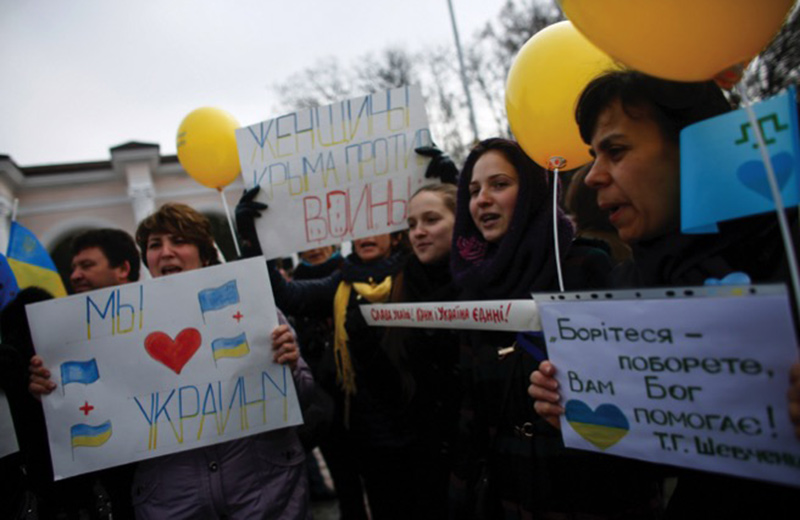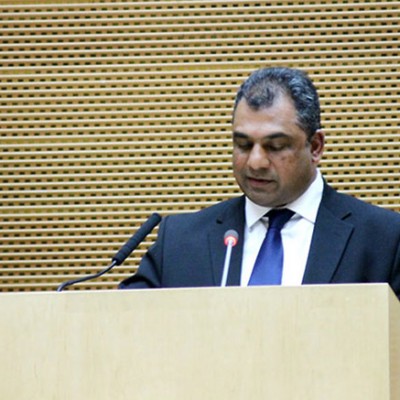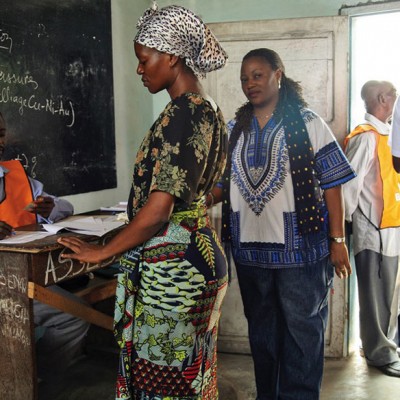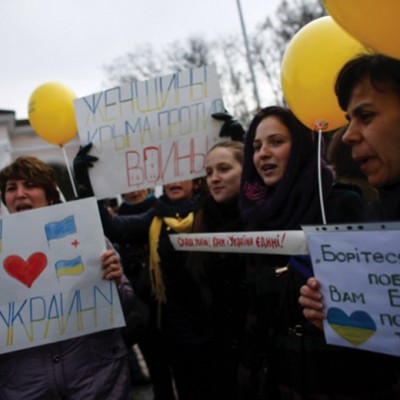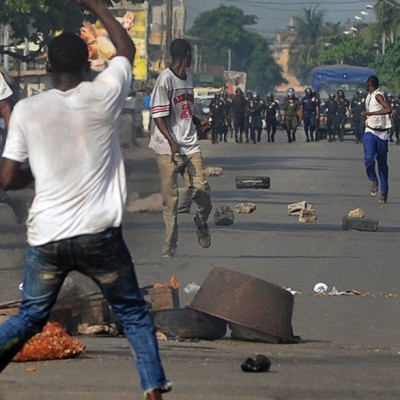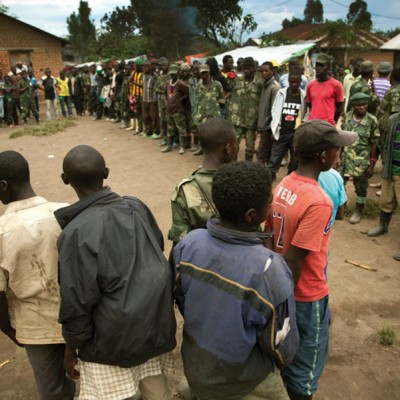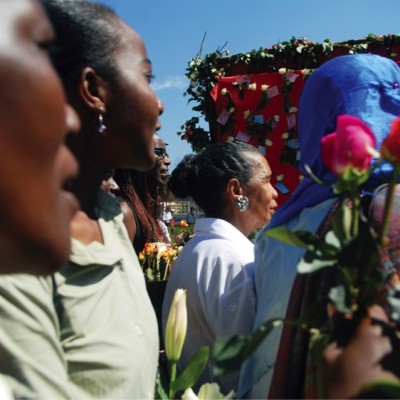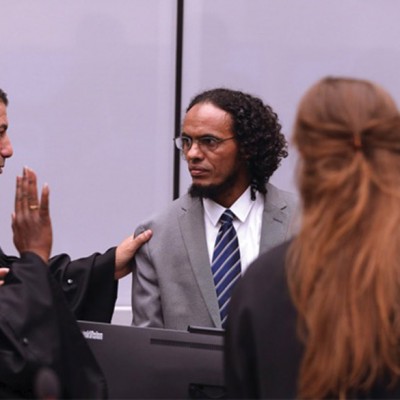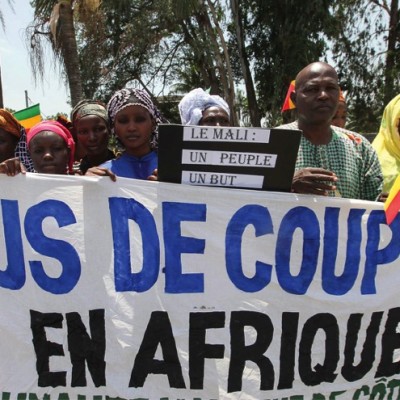Both the African and European continents are increasingly affected by violent conflict since the start of the new millennium. The backlash of the Arab Spring intensified violent extremism in some regions in Africa, and the conflict in Ukraine worsened tensions between Russia and European countries and their allies. These developments urged policymakers at the continental level on both sides of the Mediterranean to respond, and to present new policies to counter modern challenges. In Africa, policymakers focused on the continuous implementation of the African Peace and Security Architecture (APSA), while their European counterparts used resources to design new structures of defence and security.
Three developments have contributed to the European Union’s (EU) renewed commitment to integrate its member states’ security and defence policies. First was an eruption of violent conflict observed in the EU’s backyard, with the annexation of the Crimean peninsula by Russia in March 2014. Second, large numbers of refugees arrived in Greece in the summer of 2015, sparking political discussions on issues of culture and the integration of migrants in many of the member states. Third, against the backdrop of the first two developments, defence expenditure in the EU has declined since the end of the Cold War – from 2.3% of the gross domestic product (GDP) for the 12 EU member states in 1990 to 1.4% for the same group of countries in 2015.1 Currently, there are no signs that the effect of any of these three developments on the EU will decrease. This presents an opportunity for discussions on the institutional development of peace and security structures. Addressing these challenges, the EU High Representative for Foreign Affairs and Security Policy, Federica Mogherini, stated that “[s]trengthening European security and defence capabilities is therefore one of [the EU’s] big projects. We are working on reinforcing all the dimensions, […] from the strategic policy framework down to the foundations.”2
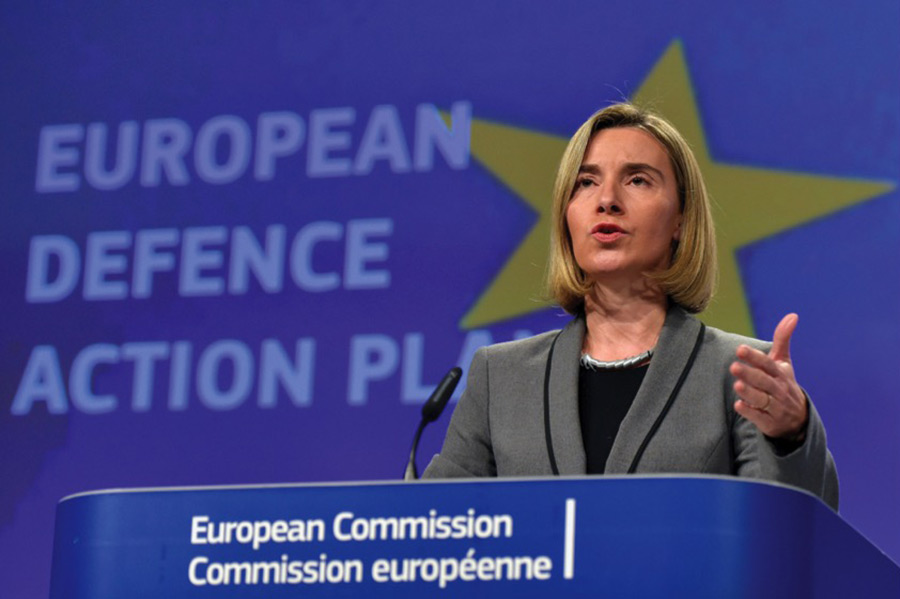
Compromise among all member states on the inclusion of military and security components into the EU structure has never been established, as the largest and most influential member states are divided on the issue. France and Italy are predominantly in favour of closer integration, while Germany is reluctant and the United Kingdom (UK) has been a fierce opponent. However, after the British announcement to leave the EU, a window of opportunity presented itself for the proponents of military and security integration.
The African Union (AU) is a step ahead of the EU with regard to continental peace and security structures. The APSA is largely operational, and offers a good opportunity for informing the institutional development of a similar system for the EU. The first component of the APSA, the Peace and Security Council (PSC), was institutionalised in 2004. While the EU has been trying, without tangible results, to institutionalise a structure on international peace and security issues, African decision-makers featured an extensive architecture and used it to intervene in multiple pressing crisis situations. For example, through the APSA, the AU intervened in Central African Republic (CAR), starting in 2013, and Somalia, starting in 2007.
The APSA’s components, in addition to the PSC, include the Peace and Security Department (PSD), coordinating all activities; a continental early warning system (CEWS); and the African Standby Force (ASF), which still has to reach its full operational capacity. Another key element of the APSA is the division of political responsibility and influence over actors on three different levels. The continental decision-making authority resides with the PSC. However, at the regional level, regional economic communities (RECs) have built their own capability to respond to crises and violent conflicts within their region. These structures are complimentary to the continental architecture. For example, both the Southern African Development Community (SADC) and the Economic Community of West African States (ECOWAS) have regional early warning and early response systems, standby forces and political structures to deploy diplomatic and military interventions. A third level of political involvement is constituted by the AU member states, which will take any opportunity to influence decisions they see as not aligned with their national interest. Although the APSA has its flaws, the main point of this article is how European institutional development can be informed by lessons learned and good practices offered by the components of the APSA that are fully operational and oftentimes very effective.
Shaping the European Union’s Security Structures
Although the main EU bodies – such as the Commission, the Parliament and the Council of Ministers – have been tested through time since the Second World War, a consolidated structure similar to the APSA, including its institutional components like the PSC, is absent in the EU. The present EU Common Security and Defence Policy (CSDP) is primarily a coordination mechanism, administering the EU’s interventions abroad, among other tasks, rather than a decision-making body. Other capabilities, such as mediation capacity and an early warning system, are scattered throughout the EU. European organisations are clustered, non-inclusive and scattered over the continent in terms of membership, and mainly focus on one specific issue or one capability. Above all, all decision-making on military and security issues resides with the member states. Unlike the EU’s cooperation on economic or agricultural affairs, there is no sovereignty delegation on peace and security issues, making the EU’s efforts in this regard purely intergovernmental.
In September 2016, two separate proposals were tabled at informal EU Ministers of Defence meetings. The first proposal, drafted by the French defence minister, Jean-Yves le Drian, and his German colleague, Ursula von der Leyen, specifically focused on creating non-inclusive international security institutions for smaller subsets of member states to avoid long consensus-seeking discussions on security integration that will most likely produce few results. It is suggested that funding for the implementation of this project is obtained from a new defence fund, in accordance with earlier proposals from the French president, François Hollande. The Italian proposal, on the other hand, emphasises the creation of a new international force for the EU. As with the Franco-German proposal, the document tabled by the Italian ministers of Foreign Affairs and Defence asks European decision-makers not to wait for consensus on the institutionalisation of security integration, but to go ahead with smaller groups of like-minded member states and focus on specific capabilities and tasks such as intelligence and airlift, as well as establishing more general organisations, such as a standby force.3
Both proposals reinforce clusters of defence cooperation within the EU, rather than moving toward inclusive integration on peace and security. The new non-inclusive bodies would have more power and capabilities to respond to conflict and crises. The EU, therefore, is looking to institutionalise a system similar to the APSA and the AU’s partnerships with the eight RECs.4 One important difference between the two systems needs to be highlighted. Whereas European peace and security issues tend to focus on situations, conflicts and crises outside of the organisation’s own borders, the APSA is mainly focused on responding to situations within its geographical region. Although this is a key difference at first sight, states do make decisions based on self-interest – whether they are located within or close to a region in which a crisis is emerging, or whether they are further removed. European states may have just as much interest steering the outcome of a conflict or intervention outside the continent in a certain way as a neighbouring country may have, for example, in an African context. Geographical proximity and internal versus external focus have limited influence on the relevance of the EU’s institutional development of lessons learned from the APSA.
Focusing on the relationship between the AU and RECs regarding peace and security, best practices and lessons learned can assist the EU in preventing identified flaws in its own system. Four specific issues are discussed in the remainder of this article as best practices and lessons learned. First, the lack of guidance on which actor engages in which situation is assessed. Second, the diverging interests between the AU and RECs can be a challenge. Third, the effects of the REC-AU relationship on accountability are presented, and fourth, the involvement of civil society organisations (CSOs) in peace and security issues and the APSA is discussed.
1. Lack of Guidance on Engagement
The relationship between the AU and the RECs is codified in two different arrangements. The 2002 Protocol on the PSC establishes the main bodies of the APSA and introduces the legal groundwork for the partnerships between the AU and RECs. The Protocol states that the chairman of the PSC coordinates the partnerships to ensure that actions and interventions are aligned. The partnerships are then codified in memorandums of understanding (MoUs) between the AU and each REC. The MoUs specify that the relationship between the RECs and the AU be based on subsidiarity, giving the RECs leeway to disregard the AU’s guidance. The fact that the RECs are formally independent organisations with their own mandates from their member states reinforces their independent decision-making and policy development. Furthermore, in issues of conflict and crises, the political situation is likely to leave little opportunity for the AU chair to mitigate and coordinate deployment by the different organisations.5
The lack of coordination causes the different RECs and the AU to compete continuously over leading roles in peace and security situations, while the lack of enforced guidance is likely to make responding to conflict and crises more costly and less rapid. To achieve a higher degree of efficiency, an organisation’s capabilities should guide whether that organisation is involved in peace and security interventions. Too often, it is not capabilities but rather the amount of diplomatic pressure exercised that explains which organisation or state is involved in a certain situation. This impacts the efficiency of the intervention negatively.
The inefficient use of resources was observed in the response of the AU and ECOWAS to the crisis in Côte d’Ivoire in 2010. Both organisations sent their respective high-profile mediators to Côte d’Ivoire, and used their “carrot and stick” approach to influence major actors in the political crisis and broker a peaceful resolution to the dispute. The duplicate effort was not only a waste of resources, but also provided political figureheads in the West African country the opportunity to shop around for the arrangements of most benefit to them.6 In this case, the lack of clarity in the institutional relationship provided all actors with the possibility to deploy individual strategies, impacting the effectiveness of the APSA negatively.
2. Diverging Interests and Policies
Further lack of clarity is witnessed in the values that the RECs and the AU adhere to, and the policies they propose. While membership within the RECs overlap somewhat, the RECs and AU do represent other constituencies, impacting their values and policies. One relevant, often-disputed principle is defined in Article 4 of the AU’s Constitutive Act: the organisation has a right to intervene in countries in case of genocide, war crimes and crimes against humanity.
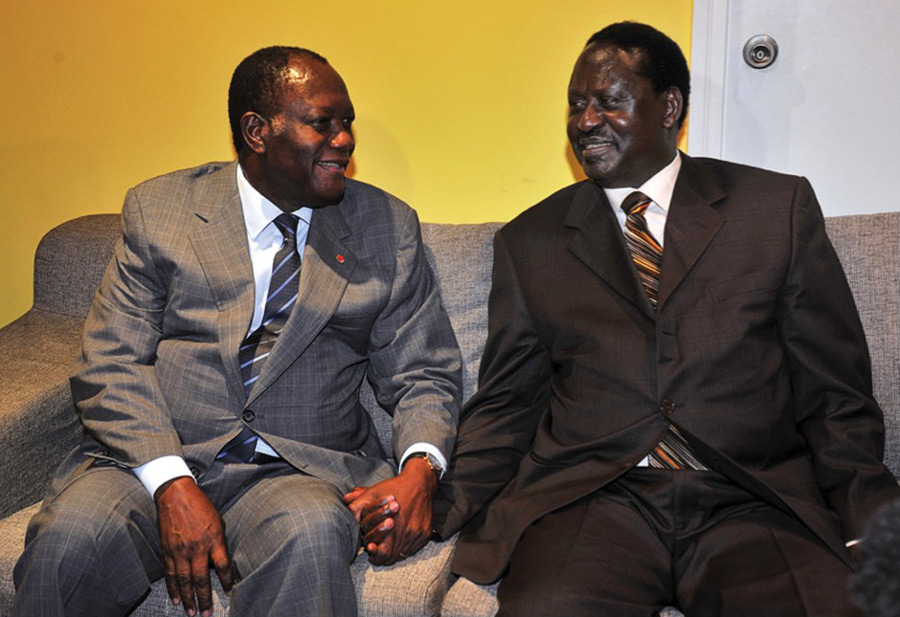
A divergence of values or interests between the RECs and the AU is problematic when the interests and policy stances of these organisations deviate on pressing issues of conflict and crises. The impact of such a difference of values, upheld by an REC and the AU, was observed in the intervention of SADC in Zimbabwe in 2010. SADC highly values sovereignty and the principle of non-intervention, while the PSC has been slowly stepping away from these principles in favour of the responsibility to protect.
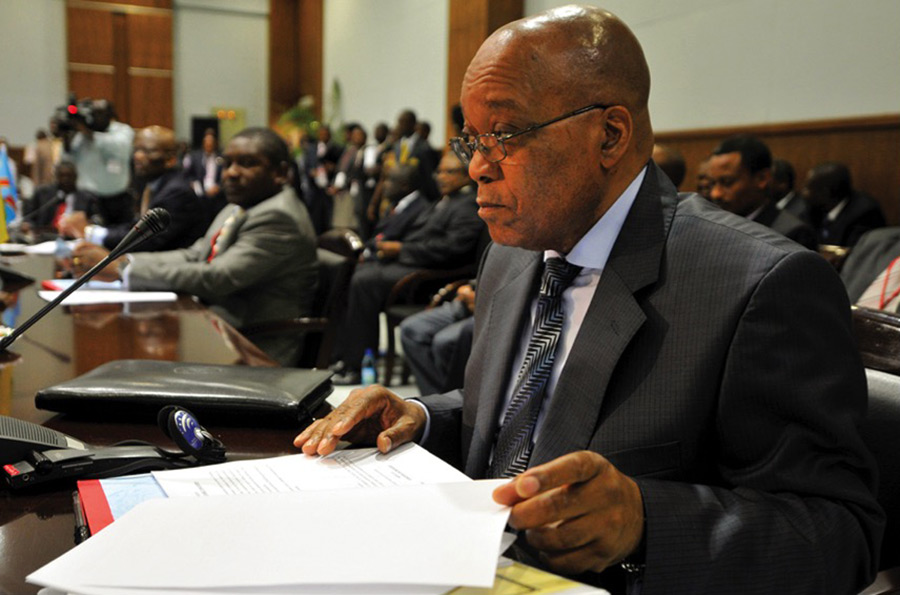
In spite of a call from opposition leaders in Zimbabwe to involve the UN and the AU in the response to the political crisis in Zimbabwe between 2008 and 2010, SADC took the lead. SADC member state South Africa was tasked with mediation efforts, while the situation was successfully kept away from the PSC agenda to protect Zimbabwe from infringement on its sovereignty.7 The same pattern was observed in ECOWAS’s response to the post-election crisis in Guinea-Bissau in 2012. While international and AU observers considered the elections to be fair, the losing candidates denounced the results and staged a military coup d’état, imprisoning the president-elect. Responding to the crisis, ECOWAS proposed a roadmap that accepted the post-coup situation and annulled the election results.8 Coordination on policy and the norms adhered to by actors would reinforce the effectiveness and trustworthiness of the APSA as the continental structure in which all actors see themselves represented.
3. Accountability
The presence of multiple non-inclusive security organisations – for example, in the African context with the different RECs and the AU – makes it possible for actors to escape accountability from their actions or inaction. The problem is limited when only one decision-making body holds responsibility to act in peace and security situations. With a limited number of international stakeholders, failures are easily attributed to the responsible actor. On the other hand, when there are many actors involved, placing the blame is much more difficult. This is not to say that limiting the number of organisations tasked with peace and security is a solution to this problem, but overpopulating a continent with organisations competing to be involved is far from desirable.
Accountability is also challenged by the disproportionate ability to influence decisions on policy and interventions that more powerful countries may have as a member of smaller international organisations. In the AU, regional African hegemons balance each other out to a degree, and none of them is evidently more powerful. In regional organisations with a smaller membership base, the balance is oftentimes not present, providing the regional hegemons with an advantage over their fellow member states. This harms accountability, as the actions of these RECs will continue to be seen as a product of cooperation by all member states, while in practice, some states may not see themselves represented in the outcomes.
The presence of such a situation – in which a powerful REC member state imposed its decision on the action the REC undertook – was observed during the Zimbabwe situation mentioned earlier. When the issue of Zimbabwe became urgent in 2008, “[p]rivately, a diplomatic battle ensued between [then Tanzanian president and AU chair Jakaya] Kikwete and [then South African president Thabo] Mbeki, with presidents Kikwete, Mwanawasa of Zambia and Khama of Botswana urging an expanded mediation team and a more robust UN role. The efforts were strongly resisted by Mbeki.”9 While SADC member states Zambia, Botswana and Tanzania presented their stance on involving the AU and the UN, South Africa opposed this, and SADC continued to be the only international body to respond to the crisis in any meaningful way. Being accountable for actions and policies is vital in democratic systems of governance. When accountability is challenged, a way to resolve that is through the involvement of CSOs as monitoring agents.
4. Involvement of Civil Society
An important benefit of the devolution of peace and security tasks to RECs is how it encourages and improves the role and involvement of CSOs. As RECs are less distant to the societies of their member states – for example, through the economic activities they perform – these organisations have more potential to interact with CSOs. Early warning is an area in which CSOs could play a relevant role, offering grassroots observations to establish a better understanding of situations before they turn violent. Although the potential for such involvement is present, not all RECs prioritise such relationships with CSOs. ECOWAS, however, did build a structure of CSO participation in its early warning mechanism.

Through the West Africa Network for Peacebuilding (WANEP), an extensive network of committed CSOs agreed to share status updates to inform the ECOWAS early warning mechanism. This not only limited costs for the REC in obtaining its early warning updates, but also resulted in more detailed, locally sourced information and gave CSOs in West Africa an active role in preventing conflicts from erupting. The partnership was particularly fruitful in resolving crises in Guinea and Côte d’Ivoire in 2007. In Côte d’Ivoire, recommendations based on the CSO-informed early warning information led to a high-level dialogue, and later to the Ouagadougou Accords.10 Thus, in addition to improving legitimacy and a monitoring function, CSOs can make substantive contributions to the APSA’s functioning.
Conclusion
While the peace and security context of the European and African continents is entirely different, it is undeniable that similarities in the institutional structures do exist. The proposed clustered, non-inclusive bodies of defence cooperation reflect the role of RECs within the APSA on the African continent. The fact that the African structure is functional in many different situations, as a means to deal with peace and security issues, makes the APSA a strong example to inform the development of similar bodies in Europe. This demonstrates the value of a more detailed scholarly debate on how best practices and lessons learned from the APSA could inform institutional development in Europe.
From the preliminary assessment presented in this article, one can derive several policy recommendations relevant to European policymakers to limit known flaws in their proposed structures, and for them to incorporate the best practices of the APSA. First, the establishment of institutions within the EU framework that only represent a subset of member states should always be accompanied by agreed arrangements about which institution is responsible in which situations. The most sensible and practical solution would be to base these arrangements on the capabilities of the different bodies. A coordinator within an organisation that is of both legal and political higher standing could then enforce these arrangements. Second, for a structure of clustered, non-inclusive organisations to be unifying rather than diverging, it is important that interests between these clustered organisations are aligned and that the norms and values underlying the operations of such institutions are similar. Third, similar to the African context, the politically and economically most powerful European states regularly hold opposing interests and policy views. To ensure that these countries do not use the clustered organisations to present their solutions and interest as if they are shared by the entire subset of member states, checks and balances need to be in place. Fourth, including CSO expertise into a structure of peace and security integration will not only improve the legitimacy of the EU’s activities on security and defence, but will also provide local level information, analysis and validation, giving decision-makers access to a current source of early warning.
Although EU policymakers might be wary of inspiration from African best practices, it is evident that the AU has more experience both in designing and deploying its security cooperation structure. In developing a structure of peace and security, the EU cannot ignore the best practices and lessons learned from the institutionalisation of the APSA on the African continent.
Endnotes
- SIPRI (2015) ‘SIPRI Military Expenditure Database’, Available at: <https://www.sipri.org/databases/milex> [Accessed 6 October 2016]. Data used for Germany is for West Germany in 1990 and for the Federal Republic of Germany in 2015.
- European External Action Service (2015) ‘Opening Speech of High Representative Vice President of the European Commission Federica Mogherini at the 4th EU Symposium on Security and Defence Cooperation Between the European Union and the United States’, Available at: <http://eeas.europa.eu/statements-eeas/docs/150429_04_complete_en.pdf> [Accessed 13 October 2016].
- AFP (2016) ‘Post-Brexit Vote, France and Germany Plan “More Active” EU Defence’, Available at: <https://www.theguardian.com/world/2016/sep/10/france-and-germany-plan-more-active-european-union-defence> [Accessed 7 October 2016]; Carnegy, Hugh (2013) ‘French Seek Permanent EU Defence Fund’, Available at: <https://www.ft.com/content/230c8198-671a-11e3-a5f9-00144feabdc0> [Accessed 7 October 2016]; and Barigazzi, Jacopo (2016) ‘The Almost-an-EU-army Plan’, Available at: <http://www.politico.eu/article/italy-proposes-joint-european-military-force-schengen-of-defense/> [Accessed 7 October 2016].
- The AU recognises eight RECs: Community of Sahel-Saharan States (CEN-SAD); Common Market for Eastern and Southern Africa (COMESA); East African Community (EAC); Economic Community of Central African States (ECCAS); Economic Community of West African States (ECOWAS); Intergovernmental Authority on Development (IGAD); Southern African Development Community (SADC); and Union du Maghreb Arabe (UMA).
- International Coalition for the Responsibility to Protect (n.d.) ‘The Crisis in Côte d’Ivoire’, Available at: <http://www.responsibilitytoprotect.org/index.php/crises/crisis-in-ivory-coast> pp. 5–7 [Accessed 10 October 2016].
- Ibid.
- Dzinesa, Gwinyayi A. and Webster, Zambara (2011) ‘SADC’s Role in Zimbabwe: Guarantor of Deadlock or Democracy?’, Available at: <http://www.osisa.org/sites/default/files/sup_files/SADC’s%20Role%20in%20Zimbabwe.pdf> [Accessed 10 October 2016]; International Crisis Group (2010) Zimbabwe: Political and Security Challenges to the Transition. Africa Briefing, 70, pp. 13–15; and Ancas, Sarah (2011) The Effectiveness of Regional Peacemaking in Southern Africa – Problematising the United Nations African Union-Southern African Development Community Relationship. African Journal on Conflict Resolution, 11 (1), p. 145.
- Nathan, Laurie (2016) ‘Will the Lowest be the First? Subsidiarity in Peacemaking in Africa’, Available at: <http://www.up.ac.za/media/shared/237/PDFs/Publications/competition-and-subsidiarity-in-peacemaking-in-africa.zp84164.pdf> [Accessed 10 October 2016].
- Ancas, Sarah (2011) op. cit.
- Ekiyor, Thelma (2008) ‘The Role of Civil Society in Conflict Prevention: West African Experiences’, Available at: <http://www.gsdrc.org/document-library/the-role-of-civil-society-in-conflict-prevention-west-african-experiences/ > [Accessed 10 October 2016]; and Opoku, John Mark (2007) ‘West African Conflict Early Warning and Early Response System: The Role of Civil Society Organizations’, Available at: <http://www.kaiptc.org/publications/occasional-papers/documents/occassional-paper-19.aspx> [Accessed 10 October 2016].

